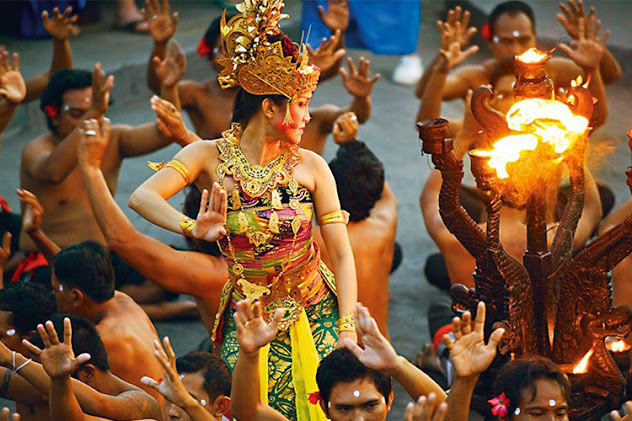Understanding Balinese Hinduism: Customs and Practices - Insights into Local Beliefs
Bali, the Island of the Gods, is not just famous for its stunning beaches and lush landscapes. It is also home to a unique spiritual culture deeply rooted in Bali religions and beliefs. Among these, Balinese Hinduism stands out as the dominant faith, shaping daily life, traditions, and even the island's breathtaking architecture.
The Influence of Bali Culture on Religion
The spiritual fabric of Bali is interwoven with its traditions, arts, and social life. Bali Culture is a blend of indigenous animist traditions and Hindu influences from India, creating a distinctive form of worship. Unlike Indian Hinduism, Balinese Hinduism incorporates elements of ancestor worship, rituals, and strong connections with nature.
Origins of Balinese Hinduism
Balinese Hinduism originated in the first millennium CE when Hindu and Buddhist traders from India brought their religious philosophies to the island. By the 14th century, Hinduism became the dominant faith, especially after the Majapahit Empire’s influence. Unlike Hinduism in India, which has diverse sects, Balinese Hinduism focuses on a harmonious balance between deities, spirits, and ancestors.
Core Beliefs and Practices
Tri Hita Karana: The Philosophy of Balance
Balinese Hinduism revolves around the concept of Tri Hita Karana, meaning "Three Causes of Well-being." This philosophy teaches harmony in three aspects:
Harmony with God (Parahyangan): Worship through daily prayers, temple ceremonies, and offerings.
Harmony with Nature (Palemahan): Respect for the environment through sustainable farming and rituals for natural elements.
Harmony with People (Pawongan): Social relationships and community bonding through festivals and cooperative work.
The Role of Temples (Pura)
Temples, or "Pura," are central to religious life in Bali. Every village has at least three temples:
Pura Desa: Dedicated to Brahma, the creator.
Pura Puseh: Dedicated to Vishnu, the preserver.
Pura Dalem: Dedicated to Shiva, the destroyer.
Famous temples like Tanah Lot and Besakih Temple attract both devotees and tourists, offering a glimpse into the island’s spiritual depth.
Offerings (Canang Sari)
Every Balinese Hindu household prepares Canang Sari, small palm-leaf baskets filled with flowers, rice, and incense. These daily offerings are made to thank the gods and spirits, ensuring harmony and protection.
Major Religious Festivals in Bali
Balinese Hinduism is rich in festivals that celebrate the cycles of nature and the cosmic balance. Some of the most significant ones include:
Nyepi (Balinese New Year): A day of silence, meditation, and self-reflection.
Galungan and Kuningan: Celebrating the victory of good over evil.
Saraswati Day: Honoring the goddess of knowledge and wisdom.
Pagerwesi: Strengthening spiritual fortitude and protection from negative forces.
The Role of Priests and Rituals
Balinese Hindu society is guided by two types of priests:
Pemangku: Village priests who lead daily rituals and temple ceremonies.
Pedanda: High priests who perform major Hindu ceremonies and spiritual guidance.
Ceremonies mark every stage of life, from birth to death. The "Ngaben" (cremation ceremony) is a grand event where the deceased’s soul is purified and guided to the afterlife.
The Sacred Connection with Nature
Nature plays a vital role in Balinese Hinduism. Mountains, lakes, and rivers are considered sacred. Mount Agung, the highest volcano, is believed to be the spiritual center of the island. Rituals for rice fields (Subak system) show deep respect for Dewi Sri, the goddess of rice and fertility.
How Balinese Hinduism Shapes Daily Life
The principles of Balinese Hinduism are visible in every aspect of life. From architecture to dance and even cuisine, spirituality is deeply embedded in Bali’s daily activities. Traditional dances like Barong and Kecak tell religious stories, while cuisine follows Hindu customs, avoiding beef as a mark of respect for cows.
Conclusion
Balinese Hinduism is a fascinating blend of spirituality, tradition, and harmony with nature. The island's rich customs, grand festivals, and deep-rooted beliefs make it a unique cultural experience for visitors. Whether you visit Bali’s temples, witness a religious festival, or simply admire the daily offerings, you’ll see how Bali religions and beliefs shape the island’s vibrant way of life. Exploring this faith gives a deeper understanding of Bali Culture and its enduring spiritual legacy.
FAQs about Balinese Hinduism
1. How is Balinese Hinduism different from Indian Hinduism?
Balinese Hinduism integrates indigenous animist beliefs, ancestor worship, and a unique temple structure, making it different from the Hindu practices in India.
2. What are the most important temples in Bali?
Some of the most revered temples include Besakih (Mother Temple), Tanah Lot, and Uluwatu Temple.
3. Why do Balinese Hindus celebrate Nyepi with silence?
Nyepi is a day of self-reflection and renewal, helping individuals reconnect with their spiritual selves and cleanse negative energies.
4. What is the purpose of the Canang Sari offering?
Canang Sari offerings express gratitude to the gods and maintain harmony with spirits.
5. Can tourists participate in Balinese Hindu ceremonies?
Yes, tourists are welcome to observe and sometimes even participate in certain ceremonies, as long as they show respect for local customs.




Comments
Post a Comment